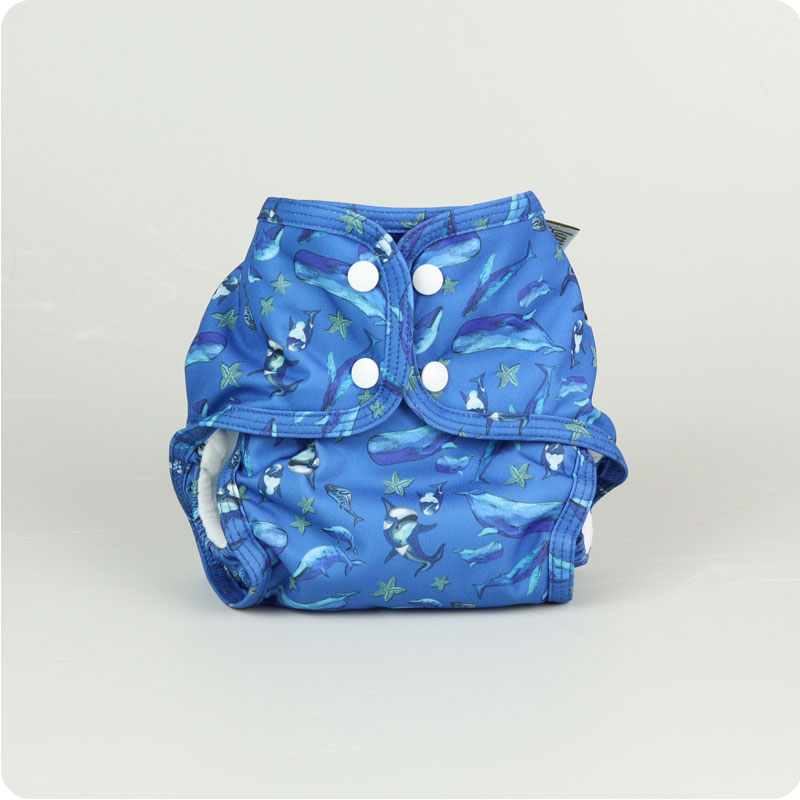The Environmental Impact of Black Friday Revealed
UK consumers are expected to spend even more than previous years on Black Friday and Cyber Monday (an estimated £3.8 billion) in 2024. However, each year, Black Friday comes with a cost that goes beyond our wallets. Excessive consumption drives higher carbon emissions from production, packaging, and shipping, leading to waste and pollution that can’t be ignored
At The Nappy Gurus, we know it can be tempting to dive into sales, but we’re also passionate about helping you shop sustainably—without sacrificing the deals you’re after! In this article, we'll discuss how Black Friday impacts the environment and how you can make a difference.
Is Black Friday Bad for the Environment?
With so many tempting deals released during the Black Friday period, it can be easy to just buy products and items for the sake of it. But frantic overconsumption and buying unneeded goods poses a significant threat to the environment. From the production of the items, the packaging and the shipping, to the waste generated from the products, the planet will suffer due to increased carbon emissions over Black Friday and Cyber Monday (delivery trucks release 94% more CO2 during Black Friday than an average week).
Indeed, a common Black Friday issue is buying for the sake of the sale. Items that are purchased impulsively often end up forgotten or discarded quickly, adding to the waste cycle. Even products returned to stores often go to landfill because it’s cheaper for companies to dispose of them than to inspect, repackage, or resell.
How to Shop Sustainably on Black Friday
On top of the devastating impact Black Friday has on the environment, shoppers will be spending a considerable amount of money on products they don’t necessarily need. The average shopper is set to spend £275 on the Black Friday and Cyber Monday sales, and the region expected to spend the most is London, spending an average of £468.
Amanda Bronkhorst adds: “Black Friday is clearly not good for the planet, and it’s up to each one of us to take action, even if it’s as simple as agreeing not to participate. If you are a consumer and decide to participate in some way, we recommend making greener choices”.
The good news? Small, mindful choices can make a big impact. Here are ways to approach Black Friday with sustainability in mind:
1. Place One Order
Avoiding multiple orders from one retailer can help reduce the number of delivery vans and, therefore, reduce potential air pollution.
Buying from local businesses can also reduce shipping distances and supports your community. Local brands often have unique, well-made products that are a perfect fit for a thoughtful gift.
2. Shop with Sustainable Retailers
By doing this, you will increase the demand for sustainable products, encouraging more retailers to rethink their eco-friendly offerings.
Indeed, many eco-friendly brands and initiatives partner with environmental organisations to plant trees, remove plastic from oceans, or support other green causes with every purchase. Shopping through these brands means your purchase has a positive impact, offsetting some of Black Friday’s environmental downsides.
3. Avoid Plastic Wherever Possible
Purchase items that are sustainably sourced and produced rather than products made from virgin plastics and fossil fuels. This will reduce potential plastic pollution and reduce carbon emissions.
4. Research Before You Buy
Research what you want to buy before making a purchase. In doing this, you are more likely to make a considered purchase decision, which will likely mean the product you are buying is something you genuinely care about.
5. Look for Reusables Over Single-Use Items
Ditch single-use products. In doing this and choosing reusable products, you will help reduce plastic pollution and waste and reduce greenhouse gas emissions.
6. Aim for Longevity
Before you hit “Add to Cart,” ask yourself: Will I use this product long-term? Is it durable, repairable, or reusable? Investing in high-quality products can save you money in the long run and reduce waste.
If you need to, plan your purchases ahead to avoid impulse buys. List the items you need, then take time to research each product to make sure it’s genuinely useful and durable.
7. Buy Digital or Experiences
Digital products—like online courses, e-books, and subscriptions—have minimal environmental footprint compared to physical products. Gifting experiences like a class, a day out, or a subscription to a sustainable service is another excellent way to keep Black Friday green.
8. Shop Pre-Owned or Refurbished Items
Platforms that sell refurbished electronics or pre-loved clothing are great alternatives to buying brand new. Refurbished items have a smaller environmental footprint because they don’t require new resources. Plus, shopping second-hand reduces the demand for new manufacturing, making it a win-win!
With the recent climate change conference highlighting the urgent need for action, it’s the perfect time for consumers to reconsider their Black Friday and Cyber Monday buying habits and to take steps in making more considered and sustainable purchase decisions.
COP26 has made it clear that global warming isn’t getting any better, and it’s crucial that not only businesses make it their responsibility to make greener choices, but the consumer needs to do their bit too.
By considering the five steps to sustainable shopping, we hope it will make a lasting impact and difference to the way consumers choose to shop, not just during Black Friday and Cyber Monday, but with every purchase decision made going forward.
If you’re looking for essentials you can feel good about, our shop is a perfect alternative. We’ve handpicked reusable nappies, sustainable wipes, and eco-friendly period products that provide long-term value while supporting the planet. Plus, our Green November Sale means that with every purchase, a tree is planted to help offset your carbon footprint. It’s shopping that genuinely makes a difference.




.jpg)
.jpg)
.jpg)

.jpg)
.jpg)



